Home > Articles > Special Series > Bill Emerson’s Work Outside of the Navy (1973-1993)
Bill Emerson’s Work Outside of the Navy (1973-1993)
Although Bill Emerson joined the United States Navy at the end of May, 1973 to perform with the Navy’s bluegrass and country band Country Current, he did not completely cut himself off from the bluegrass world outside of the Navy. Examining Emerson’s discography, it does appear that he focused primarily on his Navy duties between 1973 and 1983, but from 1983 through his Navy retirement in 1993 he was fairly active in the recording studio working with Webco Records.
Webco Records was founded in 1981 by Wayne Busbice. Busbice was the older brother of Emerson’s old boss, mandolin player Buzz Busby. Although Wayne Busbice was a musician—who often performed and recorded under the names Wayne Busby or Red McCoy—music was not his primary profession. Busbice spent four years active duty in the Air Force and then stayed in the Air National Guard until retirement, having earned the rank of lieutenant colonel. Busbice was also an educator who rose through the primary education ranks from teacher, to counselor, to assistant principal and then to principal at Gaithersburg Junior High School in Gaithersburg, Maryland. The Johnson Mountain Boys fiddler Eddie Stubbs attended Gaithersburg Junior High School and recognizes Busbice as an early influence on his career in music.
When he was young, Wayne and his brother LeMoyne performed as the Busby Brothers playing guitar and fiddle duets and singing Monroe Brothers style harmonies (Wayne on guitar and LeMoyne on fiddle). Later, they added their younger brother Bernarr (Buzz) and their cousin Billy to the group. Buzz was the youngest of the nine Busby children (two girls and seven boys), who grew up in Eros, Louisiana. In addition to his various recording projects, Busbice was also a prolific songwriter.
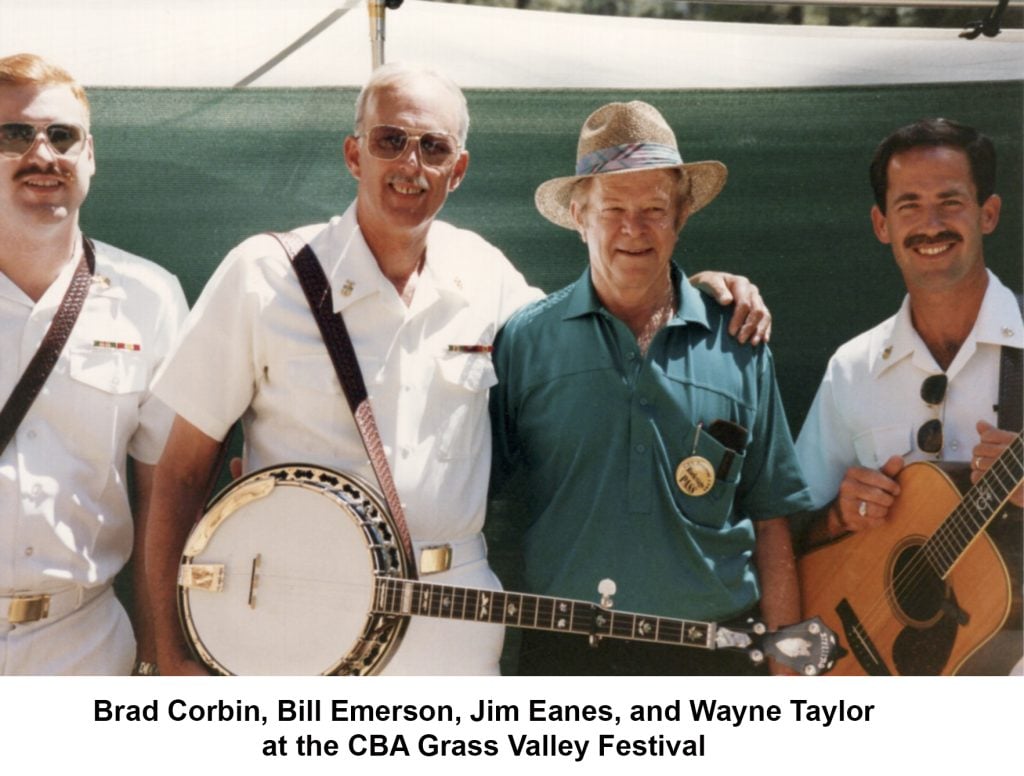
Upon his retirement from the school system, Wayne Busbice established a recording studio in his home, founded Webco Records and started a music publishing company called Old Home Place Music. In 1983 Bill Emerson performed on a Jim Eanes album, which was recorded at Busbice’s Webco Studio in Gaithersburg, Maryland. The musicians on this recording included Jim Eanes on guitar, Bill Emerson on banjo, Buzz Busby on mandolin, Doug Ward on bass, Russ Hooper on Dobro, and Carl Nelson on fiddle. This was the eighth recording released by Webco Records.
From 1985 through 1989 Bill Emerson served as the Artist and Repertoire (A&R) man for Webco Records. During those years the label released albums by Bobby Adkins, the Busby Brothers, Chris Warner, Bill Harrell, Gloria Belle, Bill Emerson & Pete Goble, Larry Stephenson, Jimmy Gaudreau and others. Emerson performed on the recordings by Jim Eanes, Pete Goble, the Busby Brothers, Jimmy Gaudreau, and Larry Stephenson. He also released a couple of his solo recordings during this time period, namely Banjo Man and Home of the Red Fox.
Sometime in 1989, Wayne Busbice decided to get out of the music business and gave Webco Records to Bill Emerson and his son John. John Emerson was about thirty years old at the time and took control of the label. Emerson’s son, Mike, recalls, “Dad was mostly hands-off. He let Johnny run the label. I think what he jokingly told Johnny was ‘You run the label on your own, just don’t mess up my name.’” In 1994 John Emerson sold Webco Records to Tom Riggs at Pinecastle and Pinecastle absorbed the Webco catalog.
During the years that John Emerson was running Webco Records, he added Patent Pending and James King to the label and continued to produce recordings by some of their previous artists. Over the years, Pinecastle has released Webco Classics, which are select recordings released on the Webco label that were compiled and reissued. The Webco Classics include recordings by Jim Eanes, Larry Stephenson, James King, and Bill Emerson.
Larry Stephenson first met Bill Emerson in the early 1980s when he was playing with Bill Harrell. Later, when Larry was with the Bluegrass Cardinals, he got a call from Emerson asking if he would participate in the first Emerson and Goble recording. Larry said, “I was blown away that he would ask. I’d admired his banjo playing and singing since he was with the Country Gentlemen. When we went into the studio, he was great to work with. He was so easy going and knowledgeable. He was an inspiration.” In 1988, Larry recorded his second solo album, Everytime I Sing A Love Song, with Webco and asked Emerson to play on the recording and produce the album. Bill left a lasting impression on Larry because it was Emerson who recommended that Larry start his own band. Larry said, “He was so up-beat and encouraging. He would say, ‘You can do this. You have the talent.’ He did that for a lot of people. He believed in you.”
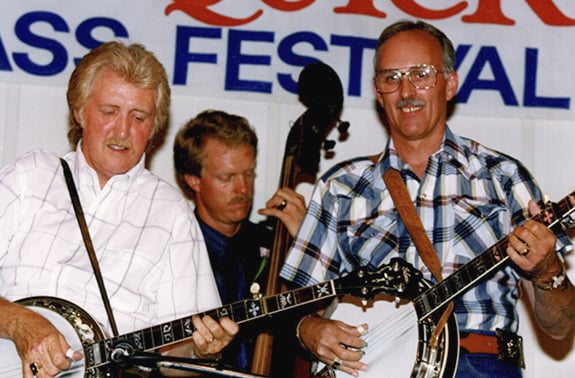
In addition to the recording work that Bill Emerson did for Webco, he was also involved in a number of Tony Rice and Rice Brothers projects that were released on Rounder Records. The first of these–The Rice Brothers—was recorded in 1989 while Emerson was still in the Navy. Recalling the experience of being in the studio with Emerson, Wyatt Rice said, “Tony made the decision to bring Bill in on banjo because he liked Bill’s playing. Bill is one of my favorite banjo players—he and J.D. Crowe. He was also a good guy to be around—a lot of fun.” When asked what he liked about Emerson’s banjo playing, Wyatt said, “Bill had a particular timing that was different. It was real relaxed. It was fun to play rhythm guitar with Bill’s banjo playing. My favorite solo of Bill’s from that Rice Brothers recording was on the tune ‘Teardrops in My Eyes.’ I also loved his solo on ‘Thunderclouds of Love’ from the Tony Rice Plays and Sings Bluegrass record. Bill was also a very clean player—impeccable.”
Wyatt Rice is currently an adjunct professor at East Tennessee State University and is the director of a school band called the ETSU Spacegrass Band. Wyatt said, “During the pandemic, when everything was shut down, I had each student set up audio equipment at home and we did some recording. Most of what we do is new acoustic instrumental music. The only two bluegrass tunes that we recorded were Bill Emerson’s ‘Cowboys and Indians’ and ‘Home of the Red Fox.’ We did those as a tribute to Bill.” The recording of “Cowboys and Indians” can be found in a video that was posted on bluegrasstoday.com. If you’d like to watch it, go to that website and search on Wyatt Rice.
Emerson’s Solo Recordings
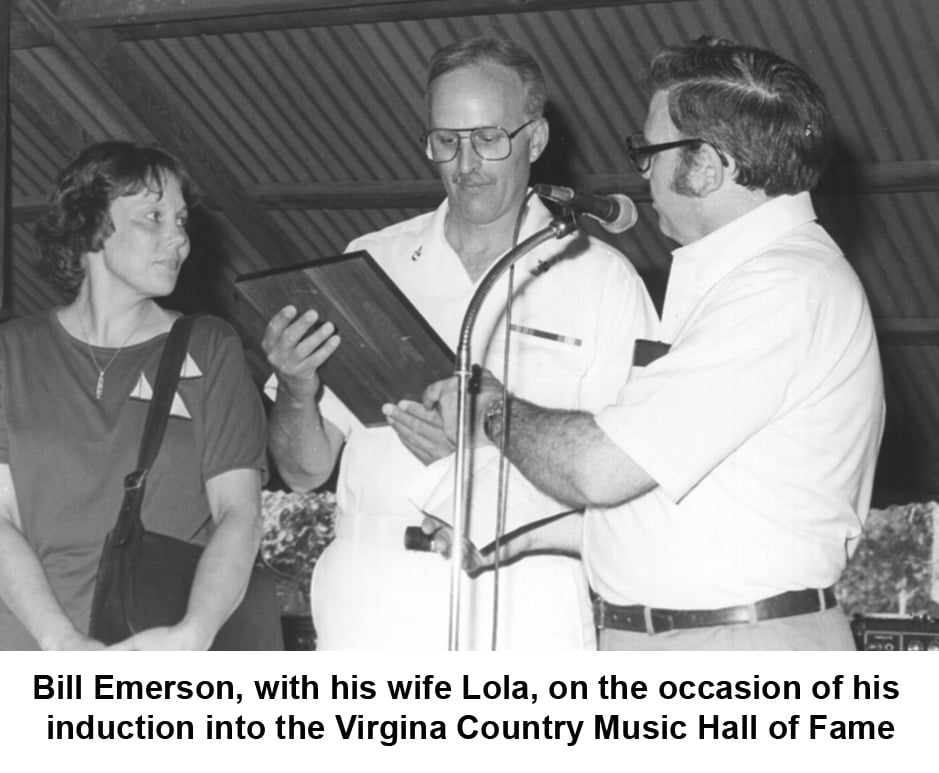
While he was still in the Navy, Bill Emerson recorded material that would end up being used on four different solo albums. These four albums were, Banjo Man, Home of the Red Fox, Gold Plated Banjo, and Reunion. Banjo Man and Reunion were released by Webco (Pinecastle) Records, while Home of the Red Fox and Gold Plated Banjo were released by Rebel Records.
Three of the cuts that appeared on Banjo Man were recorded as early as September of 1985, two cuts were recorded in January of 1989, and two others in December of 1989. The remaining four cuts on the album were not recorded until September of 1995, after Bill left the Navy. The album was released in February of 1996. Artists who appeared on this recording with Emerson included Tony Rice, Larry Stephenson, Rickie Simpkins, Ronnie Simpkins, Pete Goble, Jimmy Gaudreau, Joe Meadows, Bryan Smith, Emory Lester, Pat White, Bob Goff Jr., Mark Schatz, and Jeff Tuttle.
The Home of the Red Fox album was recorded in the Webco Recording Studio and featured Bill Emerson, Tony Rice, Jimmy Gaudreau, Mark Schatz, Jim Buchanan, and Jerry Douglas. This album included many of Emerson’s signature original tunes that are favorites of banjo players today. These tunes are “Home of the Red Fox,” “Cowboys and Indians,” “Theme Time,” “Sweet Dixie,” and “Welcome to New York.”
The Gold Plated Banjo album was recorded during two sessions in 1989, the first in January and the second in December. The album was released in June of 1990 by Rebel Records. The core band for this recording included Tony Rice, Rickie Simpkins, Ronnie Simpkins, and Jimmy Gaudreau. Other artists who appeared on the album were Larry Stephenson and Mark Schatz. This album included three Emerson originals “Ridin’ The High Iron,” “Reynard In The Canebrakes” and “Knights Of The Golden Horseshoe.” Others who performed on the album also contributed tunes—a Jimmy Gaudreau tune “True Blue,” and a Mark Schatz tune “Jump Cricket Jump.” The album also included traditional instrumental numbers such as “Black Mountain Rag,” “Silver Bell,” and “Home Sweet Home,” plus Frank Wakefield’s “New Camptown Races.” Additionally, Emerson paid tribute to two of his banjo heroes by recording Don Reno’s “Tennessee Breakdown,” and “Choking the Strings,” and the Earls Scruggs tune “Earl’s Breakdown.”
Emerson’s Reunion album was another one that was recorded over the span of about three years. The concept of this album was to pair Emerson with many of the artists who he had recorded with over the course of his career, including Charlie Waller, Doyle Lawson, Tony Rice, Red Allen, Bill Harrell and Jimmy Martin. The first session for this album was recorded in 1989, the remaining four sessions all occurred in 1991. During the Webco years, Bill also recorded a couple co-billed albums with Pete Goble that were quite popular. They were Tennessee 1949 and Dixie In My Eye.
On The Road
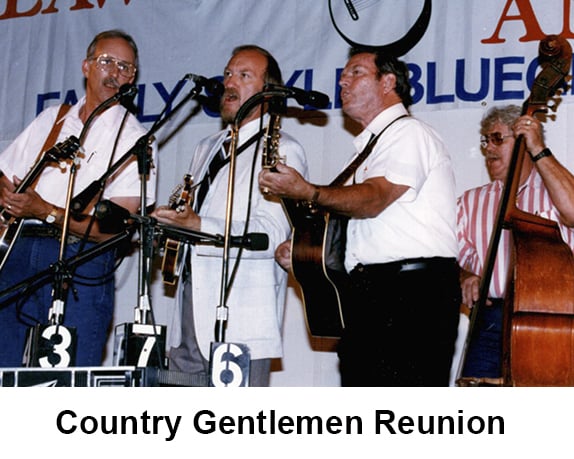
Although Bill Emerson did not do much touring between 1973 and 1993— outside of the work that he did with the Navy band—he did occasionally step on stage with some of the bands who he worked with in the studio and he performed at a few bluegrass festivals as a guest with some of his bluegrass friends, or for special reunion performances with old bandmates.
Larry Stephenson remembers Bill playing several shows with his band after he recorded a solo album on Webco. He said, “I remember that I was booked to play at the festival in Denton, North Carolina because Bill was playing a few shows with my band.” Larry’s band was new at the time and he felt like he got the opportunity to play at the Denton festival because the festival was planning a Country Gentlemen reunion and knew they could probably get Bill down to the festival if they booked Larry’s band.
Another important event in Bill Emerson’s life occurred about midway through his Navy career. In 1984, he was inducted into the Virginia Country Music Hall of Fame by the Virginia Folk Music Association. He was also honored by Virginia Governor Charles Robb, who proclaimed June 10th “Bill Emerson Day” in Virginia.
In the next article in this series, we will start to present Bill Emerson’s post-Navy career in bluegrass music.
Share this article
1 Comments
Leave a Comment Cancel Reply
This site uses Akismet to reduce spam. Learn how your comment data is processed.
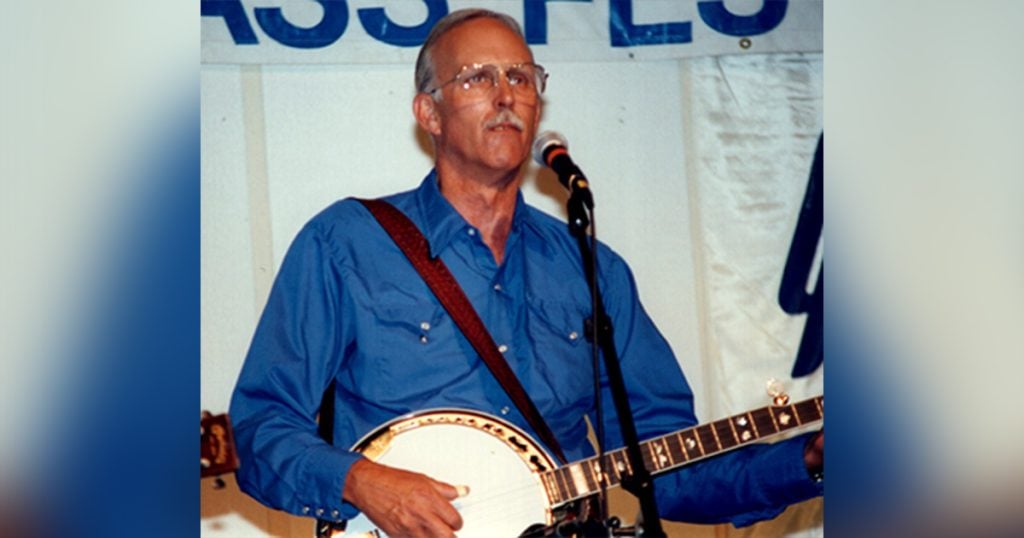
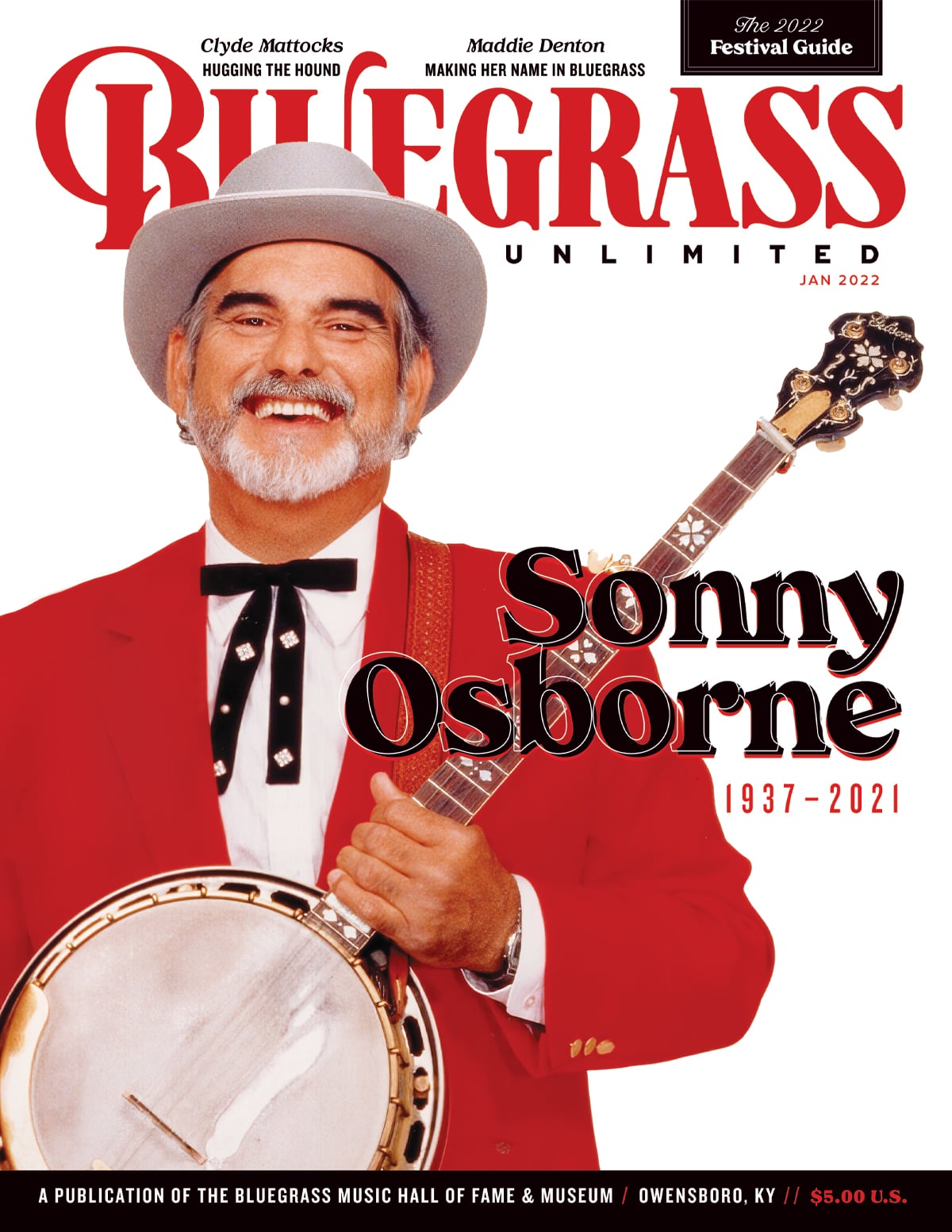
Bill Emerson was certainly a most versatile banjo player! Good too.